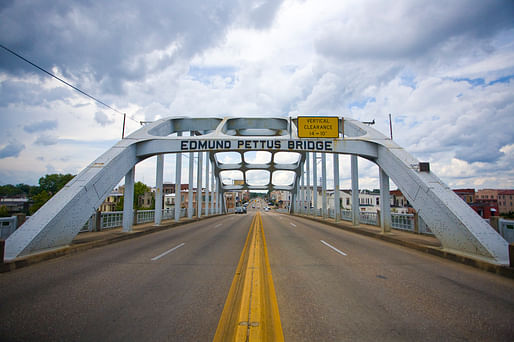

Vestiges of racism and oppression, from bricked-over segregated entrances to the forgotten sites of racial violence, still permeate much of America’s built environment. — The New York Times
For the NYT, photojournalist Richard Frishman shares powerful images of sites, buildings, and places throughout the United States along with their almost forgotten, sometimes preserved, stories from America's segregated past.
"All human landscapes are embedded with cultural meaning," Frishman writes. "And since we rarely consider our constructions as evidence of our priorities, beliefs and behaviors, the testimonies our landscapes offer are more honest than many of the things we intentionally present."
8 Comments
"And these pictures prove that if you look carefully enough, you’ll find that the evidence of the structures of segregation — and the marks of
white supremacy — still surrounds us, embedded in the landscape of our day-to-day lives."
In reality, you don't see anything from the pictures and would never know the history unless you were told. Those that are looking for some kind of signs and symbols in the built environment will be disappointed. There are segregated and integrated communities that look exactly the same. But we should have more ways of learning the legacies of each building, how it was designed, used, torn down, etc.
"Does such erasure remedy the inequalities and relieve the suffering caused by systemic racism? Or does it facilitate denial and obfuscation?" Guess that answers the Philip Johnson question.
Maybe we should build statues. That's the only way kids learn, remember.
Maybe
"Guess that answers the Philip Johnson question."
Only if you answer the question that way. Positing that an unanswered question answers anything overlooks the discussion the question intends to provoke. It, in fact, *is* the Philip Johnson question. And the differences between the two scenarios that might - or might not - result in the same question having two different answers is an interesting discussion indeed. You're missing out by avoiding it.
The photo essay thesis leans heavily toward illumination while the GSD dean believes in denial and obfuscation--or at least in CYA. The first is correct, while the second is an act in moral cowardice--why would you continue to promote and profit a practice that is irredeemably white supremacist due to the supposed wide influence of a guy who couldn't draw? The answer doesn't matter because substance isn't required here.
Statues have a more active role as glorification (though not always), not passive descriptions. Like an old billboard, not to be confused with the lasting value of a school building.
Architecture is “the will of an epoch translated into space.” But, it is also that which persists through time, and supersedes its original intended function. These things that outlive their epoch embody the deeper essence of architecture. Sometimes, boiling down to pure aspiration and awe, like in the case of Tenochtitlan, where the present function is so pure it approaches that of nature.
And sometimes like an old segregated school,
That is now a multicultural school and the halls and materials take on a new connotation in the memory of the students.
Block this user
Are you sure you want to block this user and hide all related comments throughout the site?
Archinect
This is your first comment on Archinect. Your comment will be visible once approved.